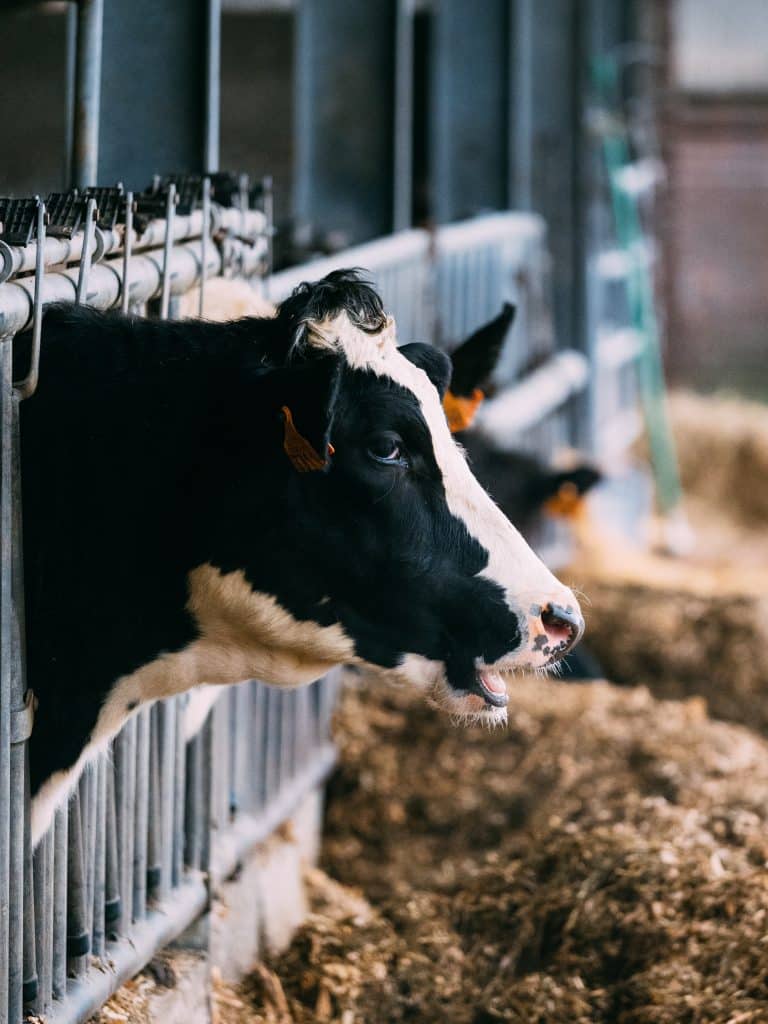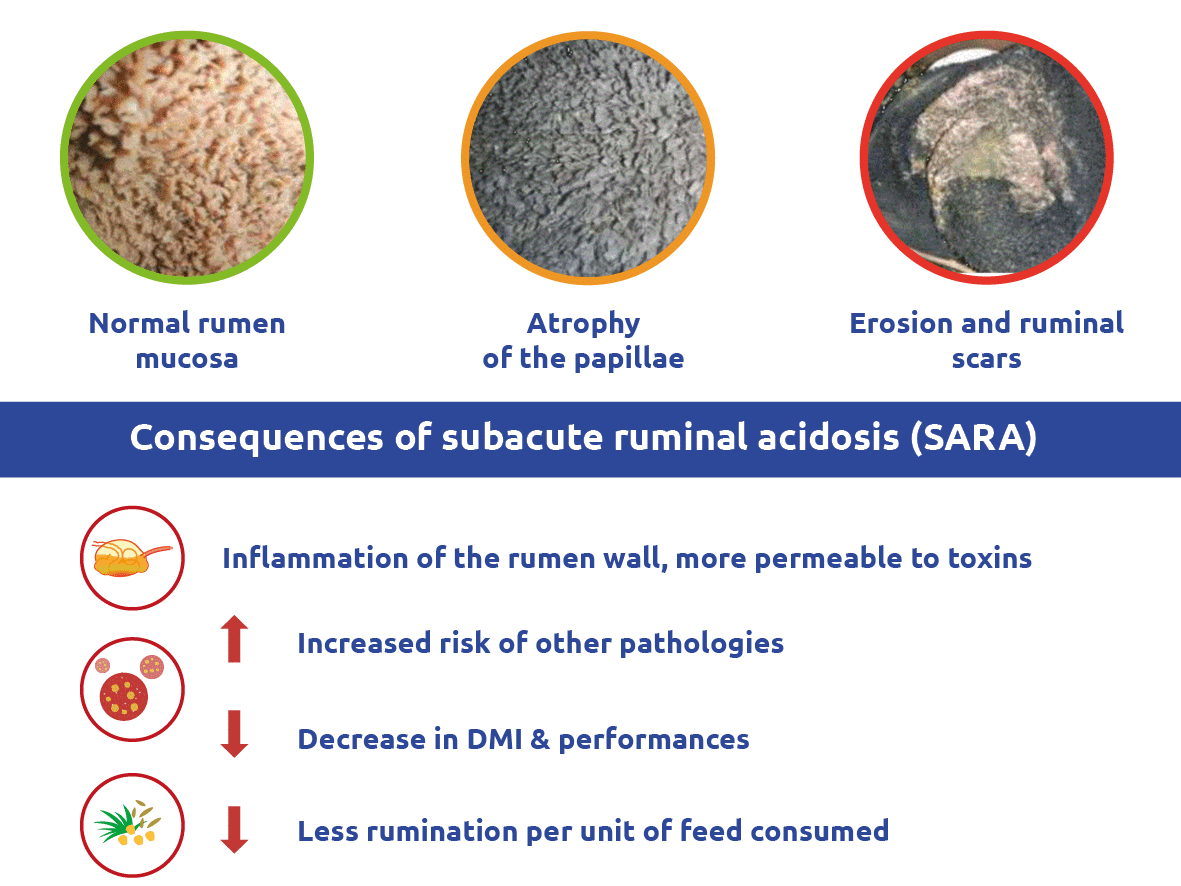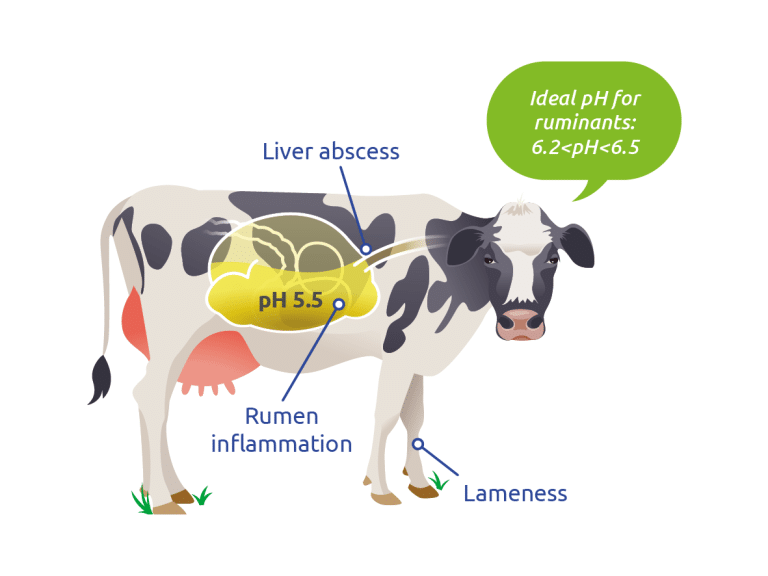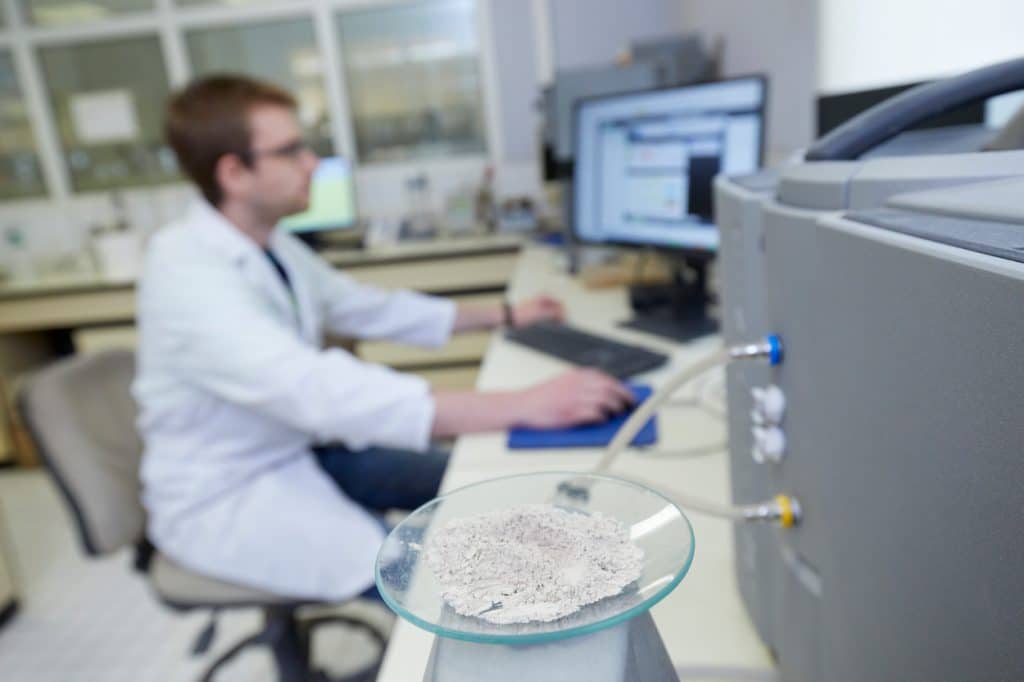Home Agriculture Animal Nutrition Acidosis
Acidosis
Ruminal acidosis is one of the most common digestive disorders in modern dairy and suckler farms. It results from an imbalance in the pH of the rumen, the stability of which is essential for the proper functioning of the microbial flora and the well-being of the animal. At Terresis Agriculture, with more than 40 years of expertise in magnesium and thanks to our capacity for innovation, we have developed a unique solution to stabilize pH and maintain a balanced rumen environment: two key levers in the prevention and control of acidosis.
Rumen Acidosis...
The rumen is the main pregastric compartment of ruminants. It is home to billions of microorganisms that break down fibre, starch and sugars and turn them into useful nutrients, including volatile fatty acids (VFAs) and microbial proteins. In a healthy rumen, the flora is balanced between:
- Fibrolytic bacteria that digest fiber and stimulate rumination;
- Amylolytic bacteria that break down starch and sugars.
The pH is maintained in particular thanks to salivary secretions, rich in bicarbonates, which act as a natural buffer.
In modern farming, this balance is fragile. Rations rich in energy (starch, sugars), combined with a lack of effective fibre, can cause an accumulation of acids from the fermentation of large quantities of rapidly fermentable organic matter. As a result, the pH drops, which can lead to subacidosis or even acute acidosis of the rumen.
The various stresses to which animals are subjected, such as heat stress, can also promote a destabilization of the rumen environment. For example, in the event of high temperatures, ingestion and rumination decrease, partly to limit heat production. This phenomenon then leads to a drop in salivation, a slowing of transit and an imbalance in fermentation: the risk of acidosis increases.


... A threat to ruminants
Subacute ruminal acidosis (SARA) is when the pH remains below 5.8 for more than 3 hours a day. It is estimated that between 20 and 25% of dairy cows experience an episode of SARA during their lactation, especially in intensive systems.
Diagnosis can be difficult because the first signs and symptoms are not very specific: decreased intake, reduced rumination, weight loss, lameness, etc. However, the consequences can be serious: imbalance of the microbial flora, inflammation and alteration of the rumen wall, secondary digestive and metabolic disorders or even reduced fertility. In the long run, this can lead to a decrease in performance and animal welfare. And on the scale of a dairy herd, chronic acidosis can represent several hundred litres of milk lost per cow per lactation.
Interest of magnesium oxide in rumen balance
To limit the risk of acidosis, the use of buffer solutions or acid-neutralizing agents is recommended. These help to keep the pH in the optimal range (6.2–6.5) and avoid excessive fluctuations during the day, which guarantee a stable and efficient rumen environment.
Among the neutralizing agents, we mainly find:
- Sodium bicarbonate: very soluble and fast-acting, but with a brief effect, causing strong pH variations during the day.
- Lithothamnion (seaweed): with a slow and long-lasting action, but without immediate effect after meals.
In parallel with these products, magnesia is distinguished by its theoretical capacity to neutralize acids, among the highest of the inorganic salts. However, its performance varies according to the origin, the manufacturing process and the grain size:
- Highly reactive MgO has a flash effect: a rapid but ephemeral action, without a long-lasting supply of magnesium.
- Conventional MgO have a low solubility: they act in the longer term, but without correcting the pH immediately after ingestion.
In addition to its effect on pH, magnesia is also a source of magnesium, a mineral essential for many physiological functions, such as bone growth, regulation of serum calcium, reduction of oxidative stress, muscle relaxation and fertility support, and maintenance of the integrity of the ruminal epithelium
Magnesia can therefore play a dual role: to stabilize the pH and to support the animal’s physiology, especially during critical periods such as heat stress, grazing or opening a new silo… But with a very variable effect depending on the source used!


A unique and high-performance magnesium solution
Thanks to more than 3 years of research in the laboratory and in the field jointly with INRA (in France) and IRTA (in Spain), Terresis Agriculture has developed a unique, natural and powerful formula combining several sources of magnesium carefully selected for their complementarity:
- A rapidly soluble fraction for immediate action after ingestion,
- Slower fractions for a long-lasting, stable effect throughout the day.
With a powerful, fast and lasting effect on rumen pH, this solution meets the needs of farmers by optimizing the digestion of energy-rich rations for better performance, even in times of stress!






